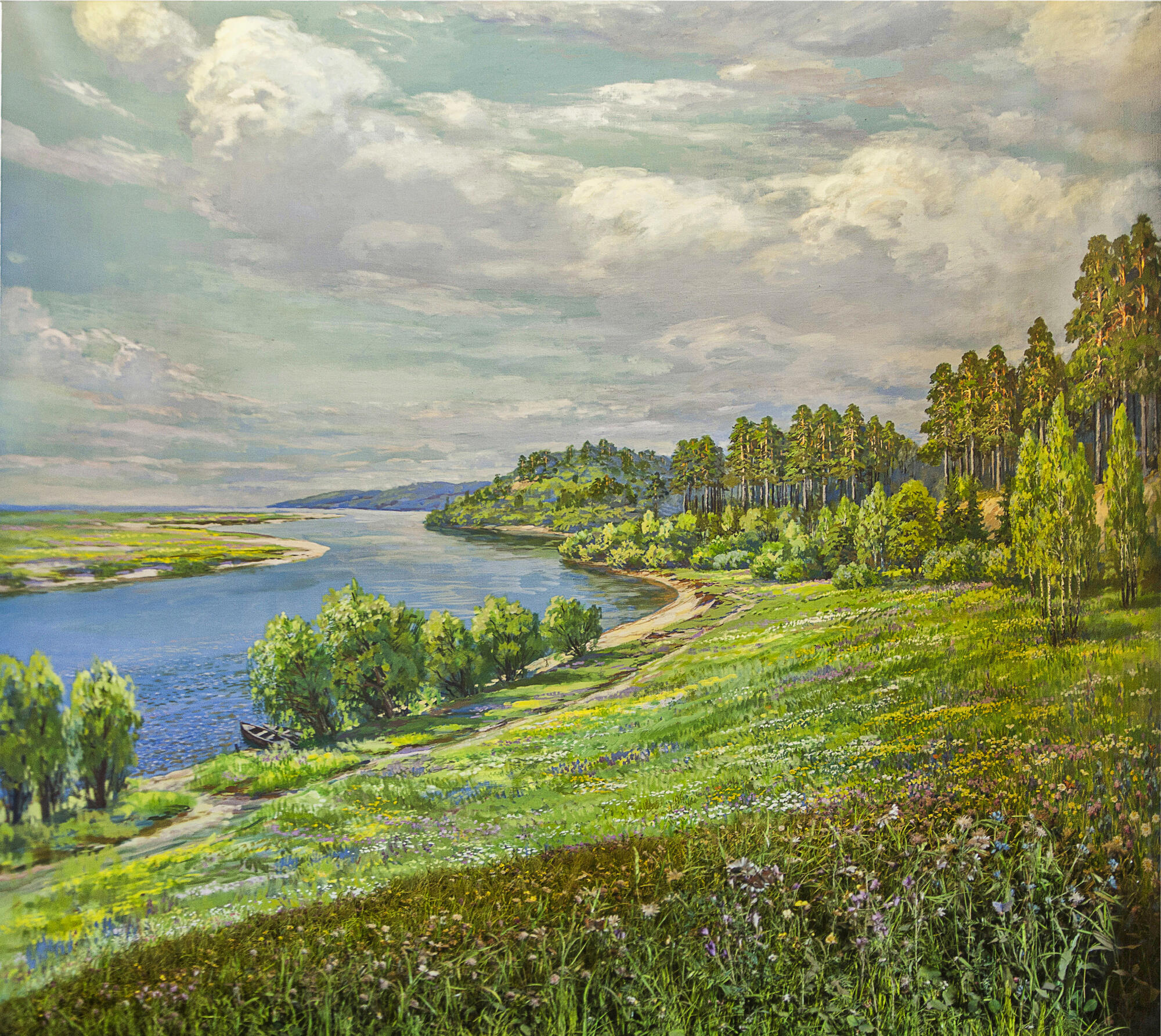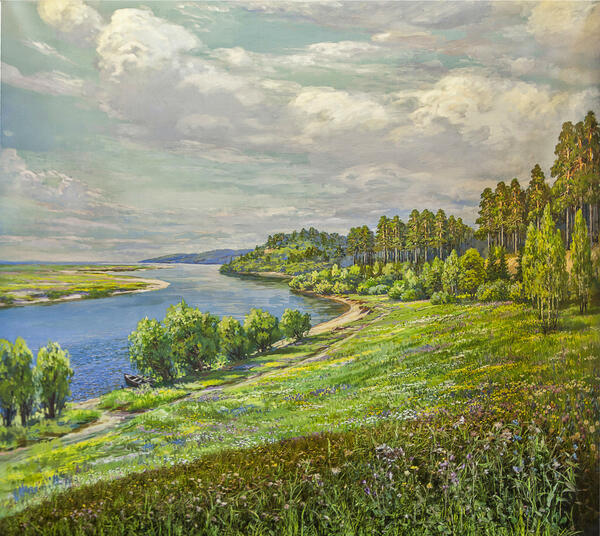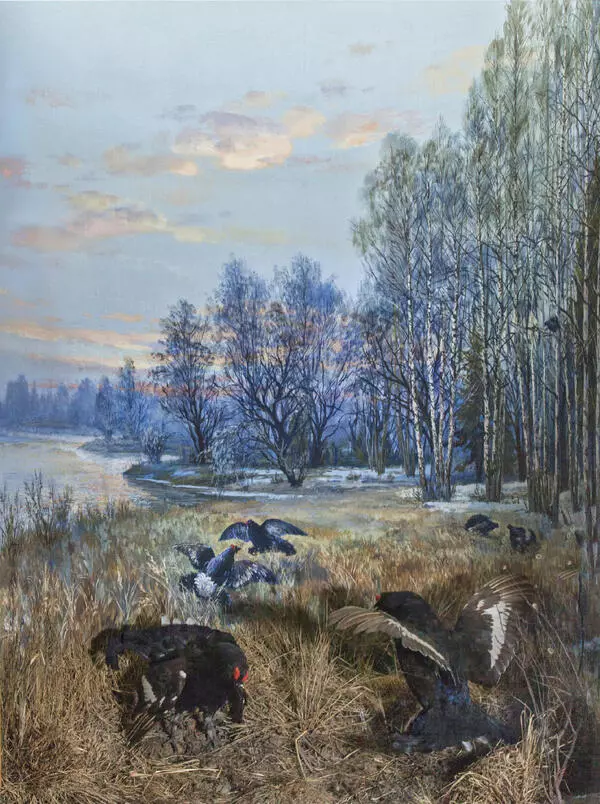The floodplain or overflow meadow is also called a water meadow. It is located in the valley of a river and filled with water during flooding, flood stage, and high water. The water washes up a lot of silty particles and dissolved mineral salts on the beach. It greatly increases the fertility of the soil, so overflow meadows bring twice the yield compared to others.
Meadows belong to intrazonal plant communities, so they are located in a variety of natural zones. Trees and shrubs do not grow there except herbaceous plants, the diversity of which depends on the degree of moisture. Cereals (Bluegrass), Cyperaceae, and Leguminosae families prevail on the meadows. The most common cereals are foxtail grass, meadow grass, bentgrass, fescue grass, canary grass, tussock grass, orchard grass, awnless brome. Among the legumes, meadow grasses include meadow vetchling, tinegrass, purple clover, alfalfa, and others.
The community of herbaceous plants, which does not include Leguminosae, Cereals, and Cyperaceae is called motley grasses. Overflow meadows of temperate latitude include representatives of various families of flowering plants, meadow crane, goatgrass, hawkweed, bedstraw, field bindweed, wormseed, chicory, meridian fennel, brown knapweed, tormentil, plantain, maiden pink, and many others.
The floristic composition of meadows varies depending on the climatic and geographical features of the territory. Insects, birds, rodents, amphibians live on floodplain meadows, but large representatives of the animal world are not found there.
The density and solidity of standing grass crop, the number of plant scions per square meter of surface, is extremely high in meadows. The top layer of the soil is so permeated with roots and creeping rootstocks that many light seeds do not reach the soil and die without germinating.
People use meadows as valuable forage lands, for harvesting hay for the winter, or as summer pastures for cattle. Cattle often tramples natural meadows while pasturing, and then they need to be regenerated.
For this purpose, special work is carried out, and this is a long process. To restore the standing grass crop, animals stop grazing in the meadow, and then the remains of uneaten grass are mowed down. The layer of animal feces is harrowed and smoothed. Tramped pastured hillocks, formed under the hooves of cattle, are broken, loosened, and pulled apart by travois. If there are few nutrients in the soil, mineral fertilizers are added to it.
Meadows belong to intrazonal plant communities, so they are located in a variety of natural zones. Trees and shrubs do not grow there except herbaceous plants, the diversity of which depends on the degree of moisture. Cereals (Bluegrass), Cyperaceae, and Leguminosae families prevail on the meadows. The most common cereals are foxtail grass, meadow grass, bentgrass, fescue grass, canary grass, tussock grass, orchard grass, awnless brome. Among the legumes, meadow grasses include meadow vetchling, tinegrass, purple clover, alfalfa, and others.
The community of herbaceous plants, which does not include Leguminosae, Cereals, and Cyperaceae is called motley grasses. Overflow meadows of temperate latitude include representatives of various families of flowering plants, meadow crane, goatgrass, hawkweed, bedstraw, field bindweed, wormseed, chicory, meridian fennel, brown knapweed, tormentil, plantain, maiden pink, and many others.
The floristic composition of meadows varies depending on the climatic and geographical features of the territory. Insects, birds, rodents, amphibians live on floodplain meadows, but large representatives of the animal world are not found there.
The density and solidity of standing grass crop, the number of plant scions per square meter of surface, is extremely high in meadows. The top layer of the soil is so permeated with roots and creeping rootstocks that many light seeds do not reach the soil and die without germinating.
People use meadows as valuable forage lands, for harvesting hay for the winter, or as summer pastures for cattle. Cattle often tramples natural meadows while pasturing, and then they need to be regenerated.
For this purpose, special work is carried out, and this is a long process. To restore the standing grass crop, animals stop grazing in the meadow, and then the remains of uneaten grass are mowed down. The layer of animal feces is harrowed and smoothed. Tramped pastured hillocks, formed under the hooves of cattle, are broken, loosened, and pulled apart by travois. If there are few nutrients in the soil, mineral fertilizers are added to it.





